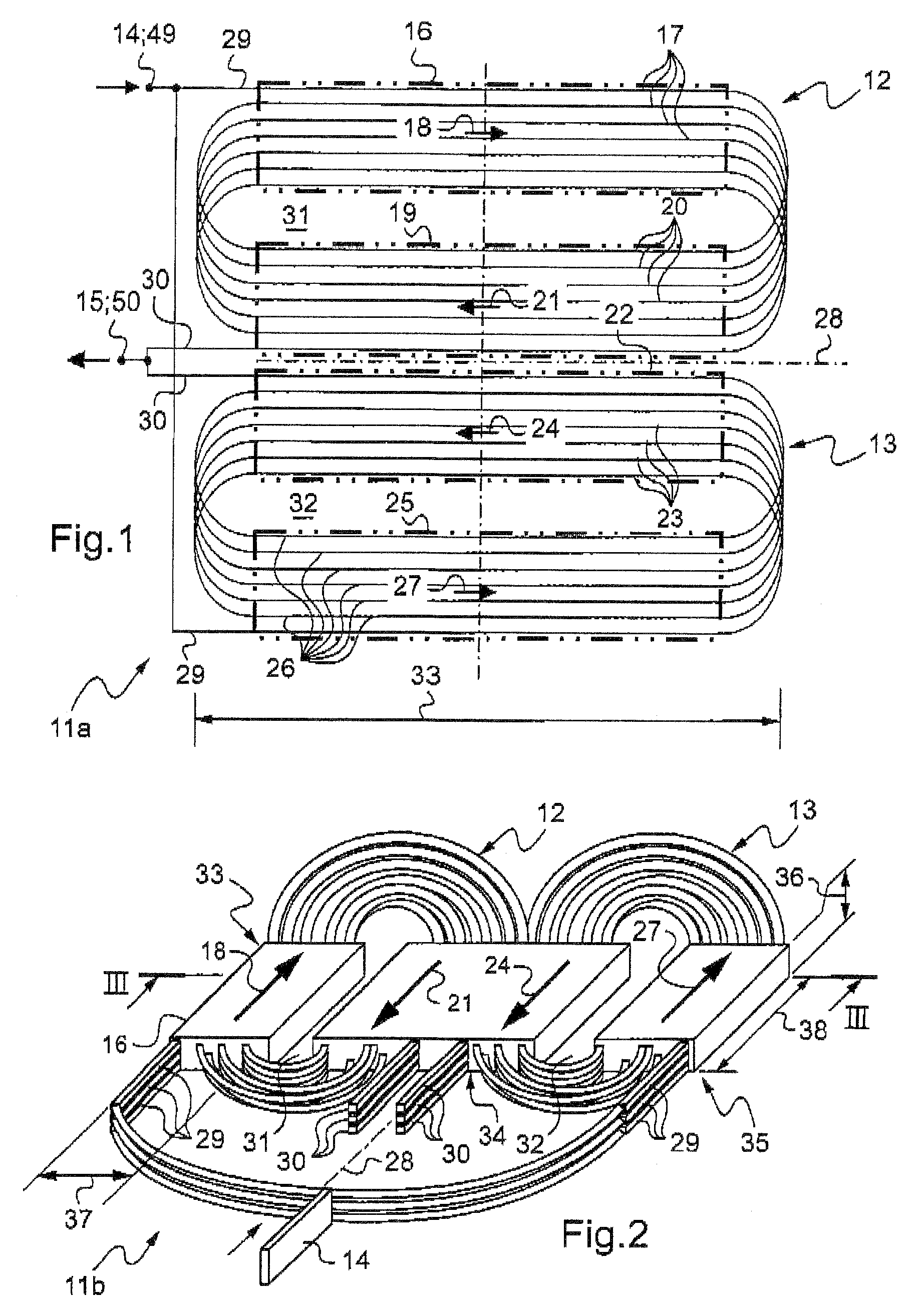Method and a device for de-icing an aircraft wall
a technology for aircraft walls and de-icing, which is applied in the direction of propellers, propulsive elements, water-acting propulsive elements, etc., can solve the problems of rotorcraft crash, inability to develop effective induction heating of aircraft walls, and consequent deterioration of composite structures, etc., and achieve good efficiency
- Summary
- Abstract
- Description
- Claims
- Application Information
AI Technical Summary
Benefits of technology
Problems solved by technology
Method used
Image
Examples
Embodiment Construction
[0035]In accordance with an aspect of the invention, the system for de-icing the blades of a helicopter by induction comprises inductors embedded in the blade that, once subjected to alternating-current at high-frequency, emit a magnetic field from the center of the blade towards the outside. The magnetic field then induces currents in the metal cover protecting the leading edge (which cover is made of an electrically-conductive material).
[0036]By subjecting the electrically-conductive material covering the leading edge to a varying magnetic field, the variation in the magnetic flux induces electromotive forces within the material (Lentz's law) that give rise to induced currents (eddy currents). The eddy currents then heat the material of the cover by the Joule effect.
[0037]At high frequency, a harmful phenomenon known as the “skin” effect can disturb the distribution of current densities within the inductors: the currents within the material that is to be heated often penetrate onl...
PUM
 Login to View More
Login to View More Abstract
Description
Claims
Application Information
 Login to View More
Login to View More - R&D
- Intellectual Property
- Life Sciences
- Materials
- Tech Scout
- Unparalleled Data Quality
- Higher Quality Content
- 60% Fewer Hallucinations
Browse by: Latest US Patents, China's latest patents, Technical Efficacy Thesaurus, Application Domain, Technology Topic, Popular Technical Reports.
© 2025 PatSnap. All rights reserved.Legal|Privacy policy|Modern Slavery Act Transparency Statement|Sitemap|About US| Contact US: help@patsnap.com



